Dotty Wrap
One look at our gorgeous Dotty Wrap, designed by Sarah Opie, and it’s clear why an easy yarn-over eyelet is the foundation of lace knitting… Low fuss, high impact, and so very simple to do!
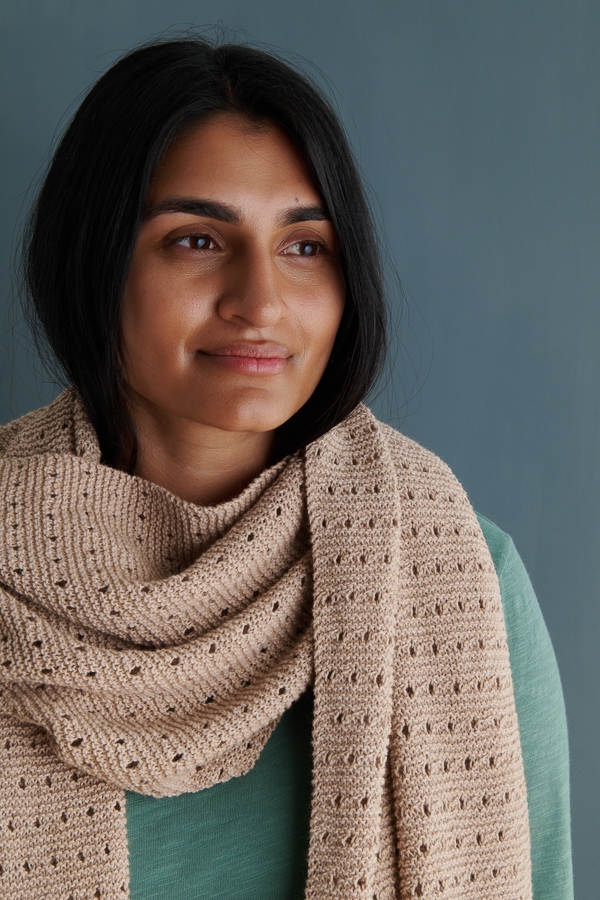
A swath of garter bespeckled with rows of eyelets, Sarah’s pattern quickly settles into a relaxed rhythm, giving you every chance to admire the gorgeous yarn on your needles!
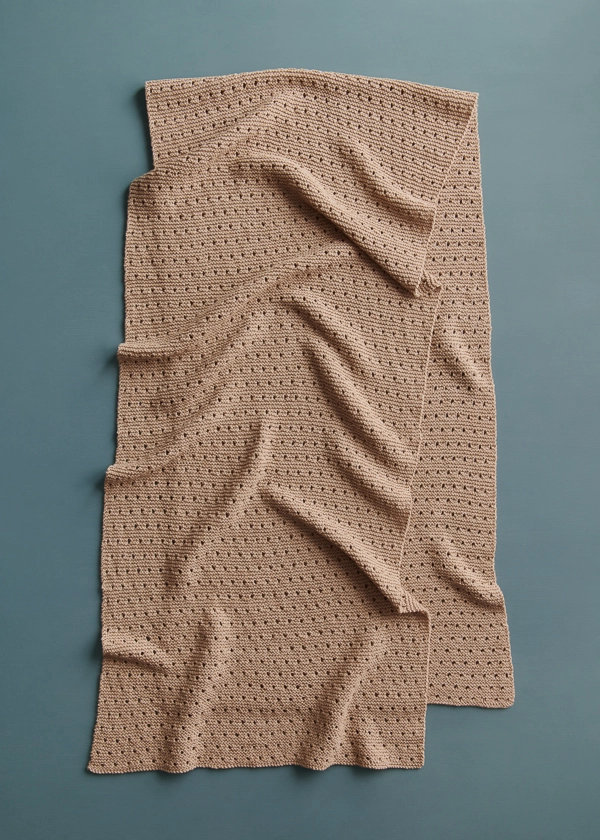
A natural pairing for this subtle pattern, our Sweetgrass is a unique blend of 65% organic cotton and 35% superfine alpaca. It feels wonderful in your hands with a lovely drape, soft touch, and delicate halo.
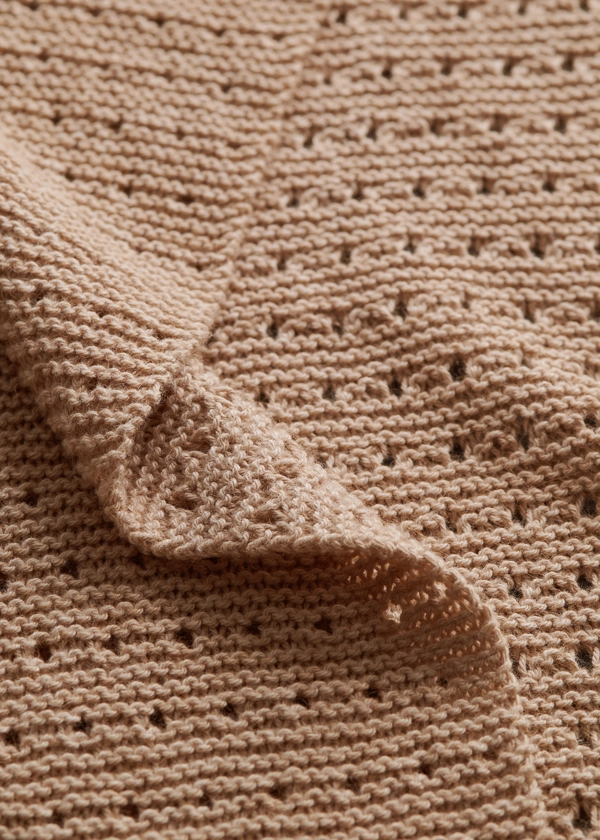
Sweetgrass’s palette of six colors are all undyed, getting their hues from the alpaca fiber, which, when carded with the warm white cotton, creates a range of gently heathered neutrals.
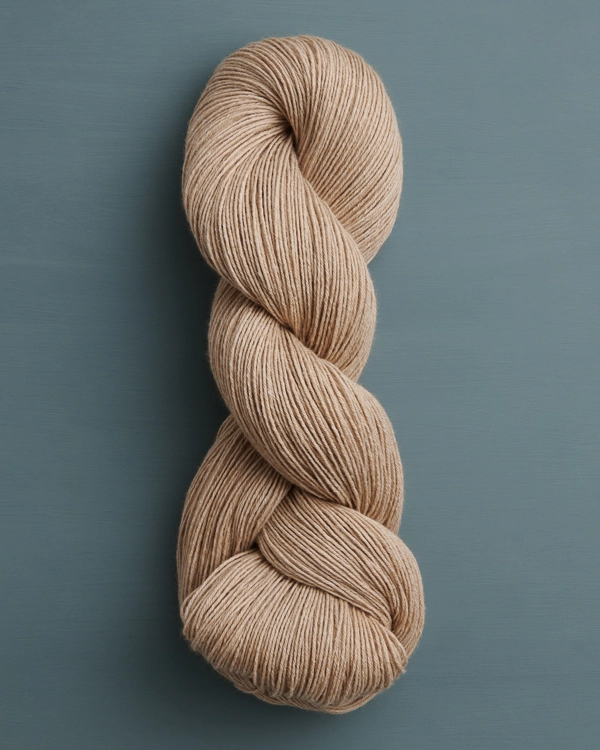
We used just four skeins of beautiful Buckwheat Beige to make our Dotty Wrap, or you could make a scarf with only two. Squishy garter and breezy eyelets, cool cotton and toasty alpaca… This all-season wrap has it all!
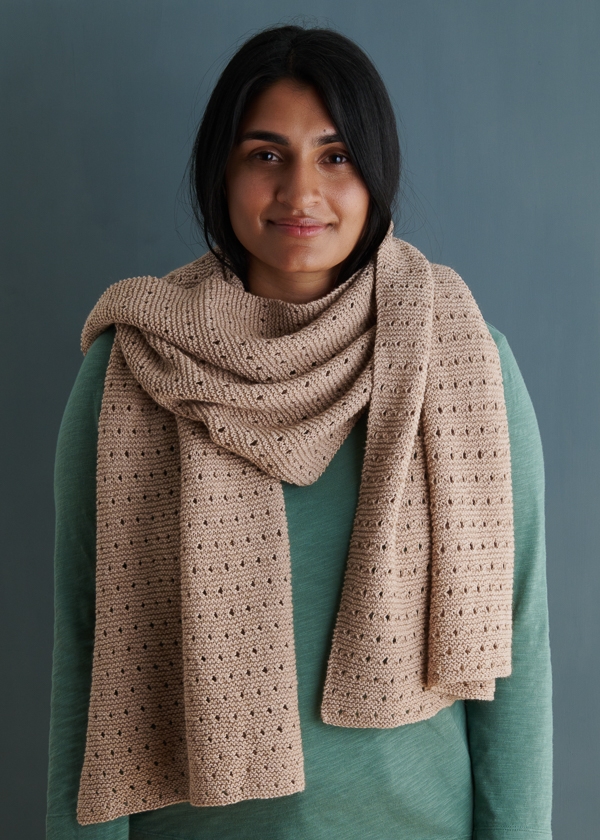
Designed for Purl Soho by Sarah Opie. After spending most of her adult life in Australia, Sarah recently returned to her other home, Canada. While working on her Master’s Degree in architecture, she felt a pull to combine her talent for design with her love of knitting. She now focuses primarily on her designs for knitting and, recently, weaving, too!
Share your progress and connect with the community by tagging your pics with #PurlSoho, #PurlSohoBusyHands, #PurlSohoDottyWrap, and #PurlSohoSweetgrass. We can’t wait to see what you make!
Materials

- 2 (4) skeins of Purl Soho’s Sweetgrass, 65% organic cotton and 35% superfine alpaca. Each skein is 437 yards/ 100 grams; approximately 805 (1655) total yards required. We used the color Buckwheat Beige.
- US 4 (3.5mm), straight or 24-inch circular needles
GAUGE
25 stitches and 44 rows = 4 inches in stitch pattern
SIZES
Scarf (Wrap)
Finished Dimensions: 9 (18¾) inches wide x 72½ inches long
NOTES
STITCH MULTIPLE
This pattern works over a multiple of 4 + 1 stitches.
PATTERN
Cast on 57 (117) stitches. We used a basic Long Tail Cast On.
Set-Up Rows 1–4: Knit 4 rows even.
Row 1 (right side): *K2, yarn over (yo), knit 2 together (k2tog), repeat from * to last stitch, k1.
Rows 2–8: Knit 7 rows even.
Row 9: K4, *yo, k2tog, k2, repeat from * to last stitch, k1.
Rows 10–16: Knit 7 rows even.
Repeat Rows 1–16 until piece measures about 72½ inches from cast-on row, ending with Row 13.
With wrong side facing you, bind off knitwise.
Weave in ends, and gently wet block.
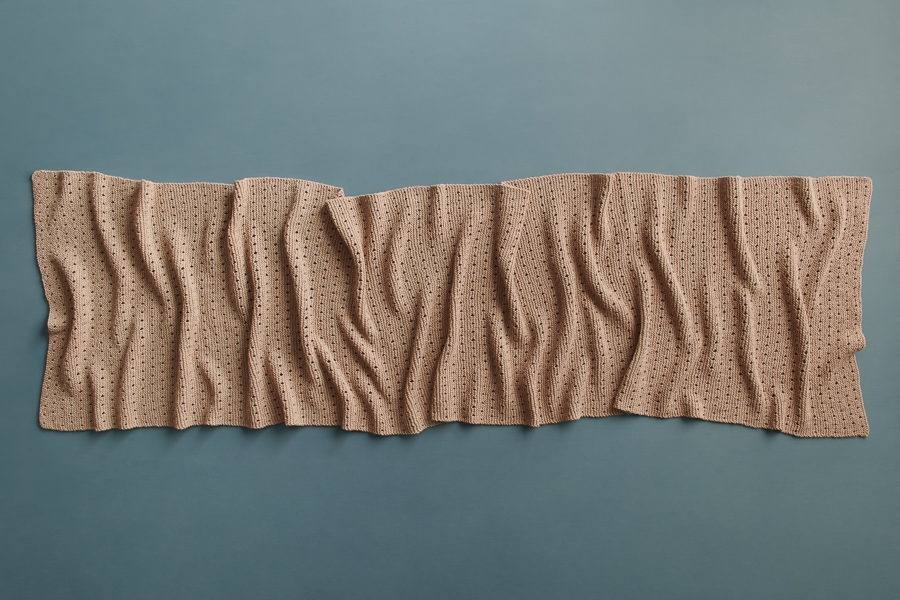
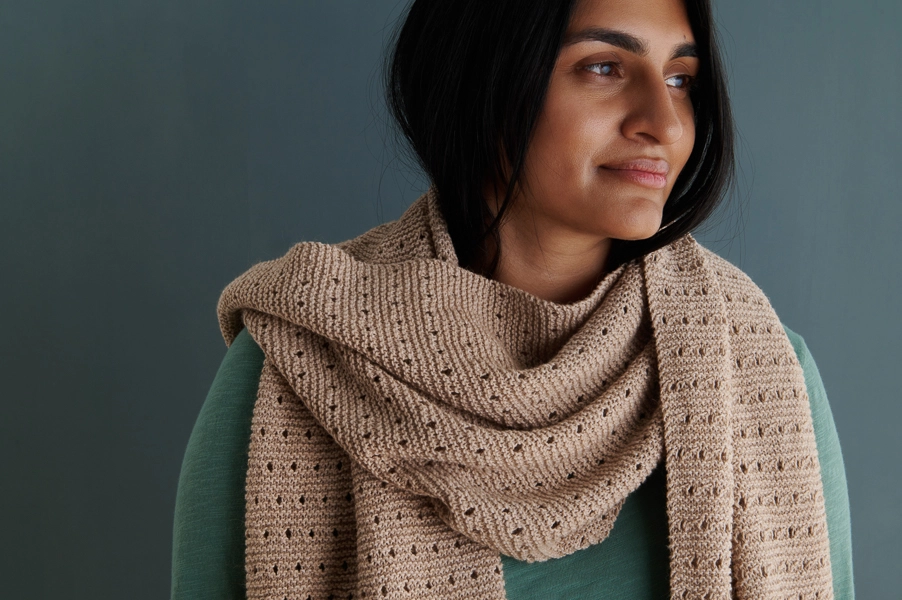

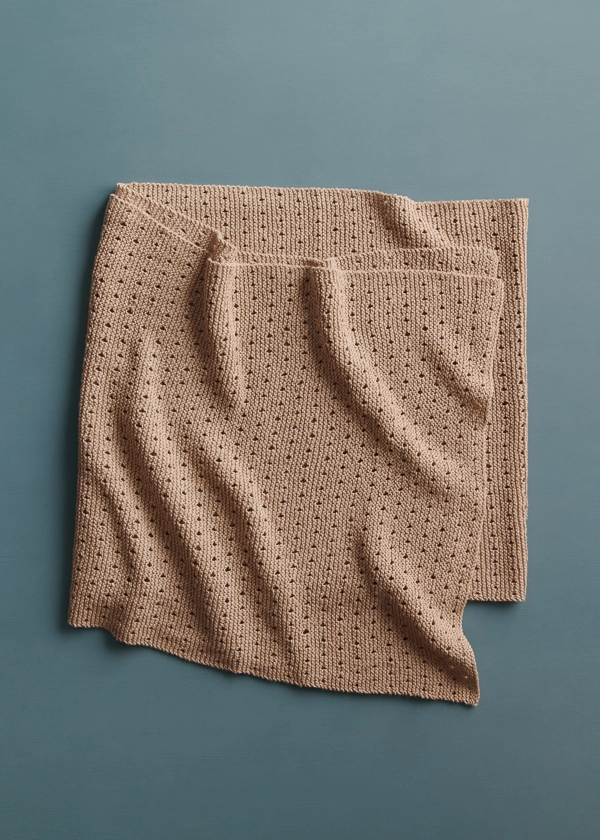
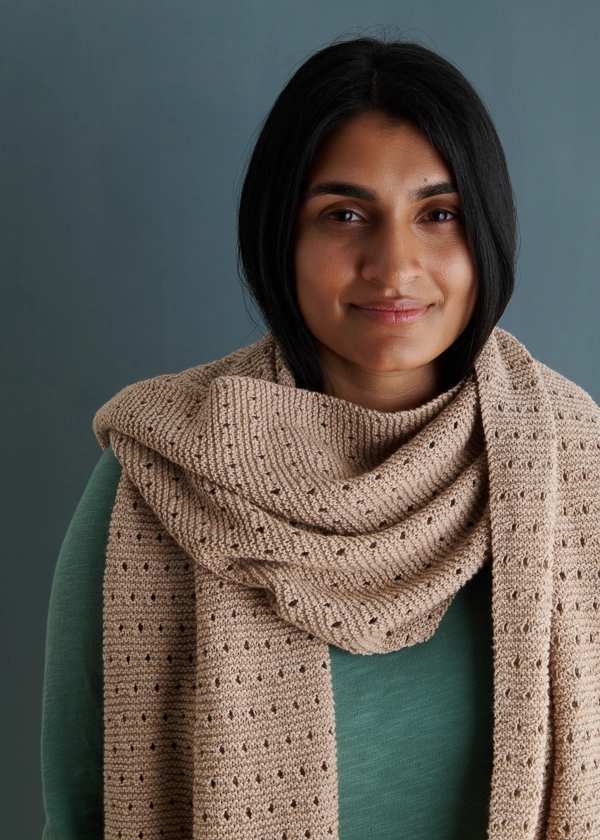
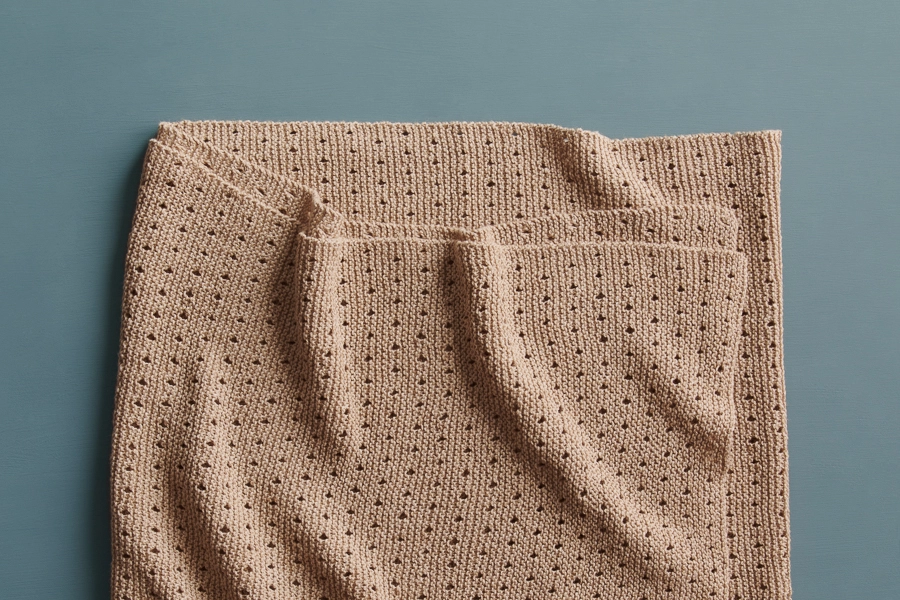


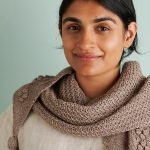
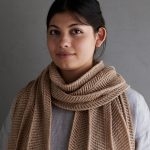
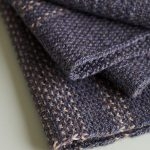
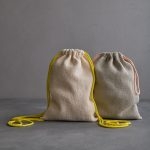
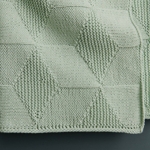
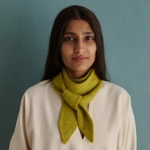
Could SIMPLY CAMEL yarn be substituted ?
If so, what would be the adjustments?
Thank you,
Mary
Hi Mary,
Yes, you can absolutely use Simply Camel for this pattern! Since Simply Camel is also a fingering weight yarn, just like Sweetgrass, you likely will not need to make any adjustments. Just be sure to knit up a gauge swatch before beginning so that you can determine the best needle size for you to use!
All the best,
Lili
I think this would make a beautiful double-loop cowl in Simply Camel. I have four skeins, 656 yards. Using the scarf pattern, do you think I would have enough yarn?
Hi Jody,
That’s a great idea! The Scarf pattern requires 805 yards, so you don’t quite have enough to make it the full length, but double-loop cowls are usually shorter than scarf-length anyway! We generally design them so that the full circumference is only about 54 or 55 inches around. If you do that, then you’ll definitely have enough yarn!
All the best,
Lili
Hi Lili,
I just bought 10 skeins of Nigh during the sale! I was wondering if there is an easy way to know how many yards I would likely need to knit the wrap in the slightly heavier weight yarn (it hasn’t even been delivered yet). I don’t really care about gauge per se as I would just cast on about 141 stitches and use a size 6 needle (4 plus 1 multiple here), since that is around what I usually like to cast on for your DK weight yarn in a shawl. I’d love to figure out if there is a way to know how approximately many yards one would need for a DK weight for 1000 yards in fingering, for example. And then how many yards of worsted you’d need to match up to 1000 DK. I wonder if there is some sort of chart out there with those comparisons. I haven’t found one on line. That type of quick math would be very helpful when buying a different weight yarn for a pattern one already has. I realize it would not be okay for a sweater or something where gauge is important and you’d have to knit a swatch and do the math (I’m not good at that but I know it is important), but for shawls/wraps it is way less important and would be a quick easy way to know how much yarn to buy when switching weights on a pattern. Thanks for any insight:)
Hi Jane,
I’m afraid there isn’t a standard formula for figuring out something like that, since every yarn has different qualities which can result in very different yardages! I generally figure out a very rough estimate by taking a look at the yardage of other projects in that yarn, and then making some ratios with the area of the projects–it’s really something that needs to be calculated on a case-by-case basis. I think that 10 skeins of Nigh is definitely enough to make a sufficiently large wrap in this stitch pattern though!
All the best,
Lili
I knit for the out of the cold project in my city, crafters make and donate warm accessories to be distributed to the homeless. I recently made this out of worsted weight yarn, since I have a lot in my stash and we’re in Canada, so heavier is better. My skeins were 150 yards, I used 5 skeins with 6mm needles and a cast on of 81 stitches, which gave me a wrap to use as a blanket scarf of the same width but almost 80″ long. My changes were sufficient for the goal of using up stash yarn and providing much needed warm garments for those in need.
Love the simplicity of this wrap! And I love the look of Spindle. What do you think about doing the Dotty Wrap in Spindle? Would it be too delicate for the “dots” to show up?
Thanks for any advice!
Susan
Hi Susan,
I think that this pattern would look lovely in Spindle! Since it’s so thin, you’ll likely need to change the number of stitches you cast on so that the wrap comes to the same width. To figure out your cast-on number, you will want to first knit a gauge swatch in pattern with Spindle. Once you know how many stitches you are getting per inch, you can multiply that number by the width that you would like and cast on the nearest multiple of 4 + 1 stitches. Then you can follow the pattern as written!
You’re right that the holes created by the yarn overs will be very tiny in Spindle, so if you’re not a fan of that, you could consider holding the yarn double. I’ve done this before, and I love the texture it creates! The gauge would also likely be different though, so I’d recommend figuring out your cast-on number in the same way I described above.
Hope this helps!
All the best,
Lili
Hi! I’m pretty new to knitting. Looking forward ti trying this pattern. When it says set up rows 1- 4. Does that mean that I just knit the first 4 rows and then when it gives the directions for row 1 that is the start of a new set? So in essence rows 1-4 would be a boarder of sorts and then I start the rows with yarn over etc? Thank you so much for your help!
Hi Valerie,
That’s correct! After casting on, you’ll knit the first 4 rows for a little border of garter stitch at the beginning. Then, you’ll knit the next row that’s called “Row 1” and continue from there!
All the best,
Lili
I just bought 3 skeins of linen quill. 2 red poppy and 1 yellow. Could I use them to make this ?
Hi Susie,
Yes! You’re in luck, that sounds like a fairly straightforward substitution! Since you have three skeins, you could even make your version in between the scarf and wrap sizes. Just make sure to cast on a multiple of 4 + 1 stitches. For example, 4 x 21 = 84 + 1 = 85 cast on stitches (which happens to be right about between the scarf and wrap cast on numbers! 😉
Please let let us know if you need any more help and thank you so much for question! It’s going to be beautiful!
Best,
Whitney
Can I use Cotton Pure on a Cone as substitute?
Hi Lindy,
You can absolutely use Cotton Pure for this pattern, but you’ll probably need to adjust the number of stitches you cast on so that the wrap comes to the correct size! To figure out your cast-on number, you will want to first knit a gauge swatch in pattern. Once you know how many stitches you are getting per inch, you can multiply that number by the width that you would like and cast on the nearest multiple of 4 + 1 stitches. Then you can follow the pattern as written!
All the best,
Lili
Could I use quartz for this? I love the hazy effect of this yarn
Hi Karen,
Thank you for writing in! You can definitely use Quartz for this project! If you decide to go with that option, you will need two skeins for the scarf and four skeins for the wrap size! Please let me know if you have any other questions!